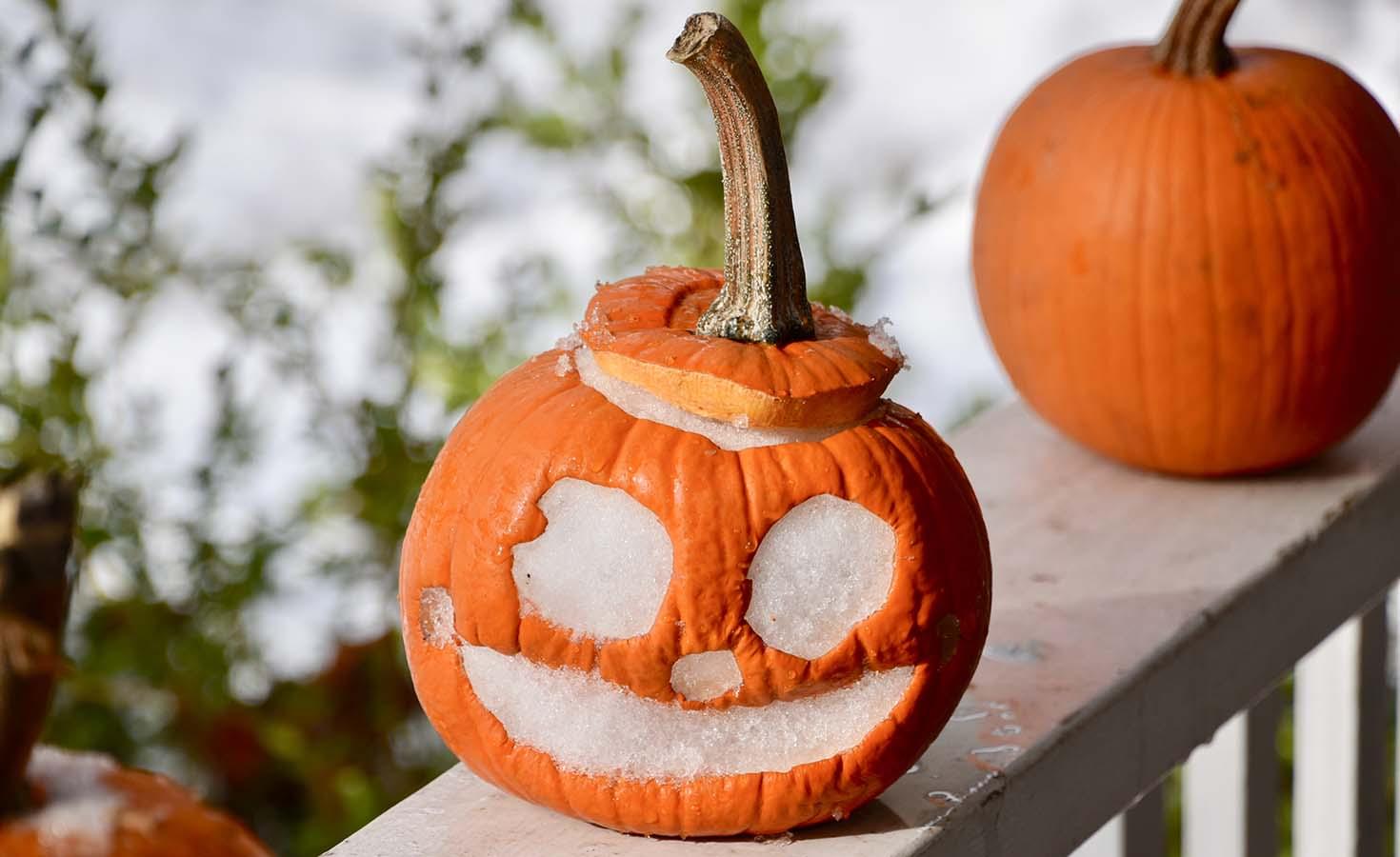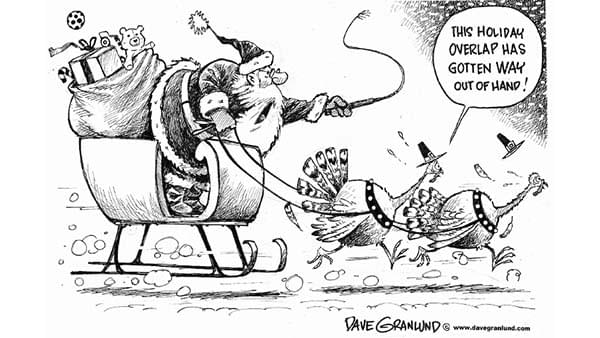
Oh, sweet, cozy Autumn. The crisp air feels refreshing after a humid summer. The leaves are changing. The kids are back in school. Plastic tombstones and rubber bats decorate the neighborhood lawns and trees. Jingle Bell Rock is playing over the grocery store loudspeakers. Wait… why is Jingle Bell Rock playing in the grocery store? Halloween candy isn’t even on sale yet!
Is Christmas really coming earlier and earlier? Let’s take a look at the marketing side of the most wonderful time of the year, and how it has and hasn’t changed over the years.
Ye olde creep
It might feel like the holiday season is starting sooner. But that’s hardly a novel complaint. As Paul Collins at Slate wrote in 2013, “The gripe about Christmas coming ‘earlier every year’ is a hardy media perennial across decades and borders.”
He even found some proof to back it up. Including a small blurb from a 1954 issue of the Saskatoon Star-Phoenix that quoted a local man as saying, “It’s bad enough when Father Christmas arrives in the shops in November. But he arrived in one Birmingham store in September. If this sort of thing goes on children will get fed up with Father Christmas long before Christmas comes.”
And that’s not all he found. Collins cites sources from 1968, 1912, and even 1885 discussing early holiday shopping. This begs the question: if we’ve been talking about it since the Victorian era, why does it feel like such a modern problem?
Not earlier, more
A report published in early 2023 by Statista (in which the ever-growing holiday season is cleverly dubbed “Hallowthankmas”) might answer that question. In 2022, holiday retail sales totaled 942.6 billion dollars. This ungodly sum of money was accrued with help from a digital holiday ad spend of 57 billion dollars.
This leads me to believe that maybe it’s not that holiday marketing is coming earlier. Maybe it’s just more noticeable. Like, a LOT more noticeable. According to a 2006 article from Caitlin Johnson at CBS, Americans in the 1970s came across about 500 ads daily. When the article was written that number had risen to 5,000. And nearly 20 years later, that number has doubled, with estimations ranging up to 10,000.
The holiday creep isn’t contained within the walls of Gimbels department store or the pages of a Sears Roebuck catalog. It’s on the loose, and that 57-billion-dollar digital ad spend has made sure the creep has infected every single screen you’ll see from now until the new year.

Backlash
So is public sentiment finally changing? After hundreds of years are we all collectively fed up? A 2016 editorial from the Greenfield Recorder noted that “Six out of 10 Americans (63 percent) are annoyed or very annoyed when holiday items appear in the store before Halloween.” But perhaps we’re softening to “Hallowthankmas,” seeing as that number was down from two years prior when 71 percent of those responding felt that way.
Maybe the holiday creep has permanently crept into the national psyche. Or maybe this is a yearly Yuletide talking point. Maybe the Ghost of Christmas Yet to Come will visit me on the 24th of December and I’ll be transported to the year 2123 to see my great-great-grandchild composing a blog about how the holidays just keep coming earlier and earlier.
If you’re interested in the interesting side of marketing, we are too, and we’re always happy to chat.

